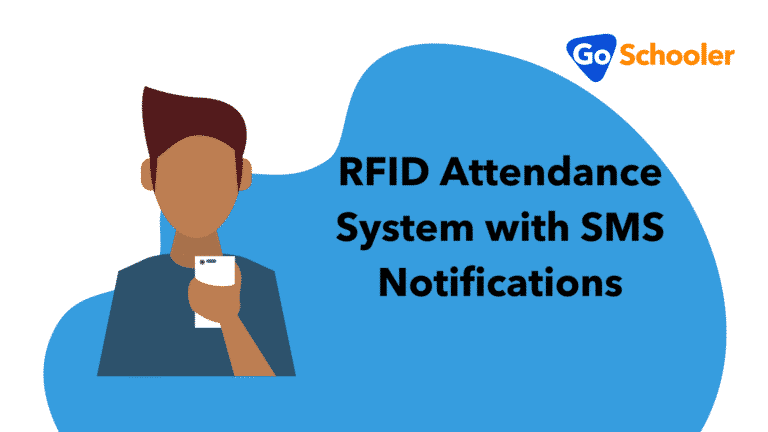
The emerging use of online measures in classes dominates today’s education. Everything slowly becomes automated from managing administrative tasks to conducting daily live classes. Moreover, advanced technologies are no longer confined to optimizing educational content and curricula designs of schools. Educational institutions also shifted to administering assessments online.
Although there are efforts to make tests online from the traditional pen-and-paper exams, it doesn’t change the ultimate purpose of achieving fair evaluation. Online learning goes hand-in-hand with digital assessments to ensure student’s mastery. As technologically advanced as online examinations can be, there are actually two sides of the coin you may want to look at. In this article, we will focus on the boons and banes of online exams for educational institutions.
Here are the FAQs you may find answers to upon reading the article:
- What is an online assessment or online examination system?
- How does an online examination system work?
- Why are online exams advantageous to schools?
- What are the disadvantages of online exams?
- How can schools make the most out of their online exams?
What is an online examination system?
The online examination system is the culmination of the student’s assessment by the use of the internet and available web technologies. Like the old familiar system of conducting exams, it aims to objectify the systematic evaluation of student’s mastery in individual subjects. A modern learning management system offers a platform in assisting schools to administer more organized online exams for students.
Whether an assessment is formative or summative, the target in online exams is to digitize assessing the student’s competency-based skills. It creatively boosts the traditional examination system. In online exams, students no longer need to gather in a room and answer their test papers within a specified time. Likewise, teachers no longer need to retrieve individual answer sheets and check and disclose the scores to class after. Online exams definitely fastened up this process through electronic assessments. To further discuss, here are a more specific view of the pros of online exams:
Advantages of Online Exams
Image from Unsplash
1. Reduction of Time and Money Spent
Perhaps the ultimate advantage of implementing online exams is the reduction of time and money spent. By automating the process of assessment in schools, teachers and students can save time from both ends. There will be no need for students to gather and assemble to the campus and take the exam. Students from remote areas can take exams wherever they are using their devices.
Also, there will be faster access for the online exam since the students no longer need to repeat filling out information unlike in the traditional test questionnaires. All data about the students who will take the exam is automatically recorded in the system. This way, the student’s job is to focus only on understanding the question and supplying the best answer.
On the other hand, the teachers can be relieved from the efforts of creating, distributing, and evaluating the test. The system of online examination eliminates the redundant and expensive process. The teachers no longer need to have the dreadful task of manually checking the test papers, not to mention the number of students they are handling.
The interface the school had makes it easy-to-use for teachers since the students can instantly receive results after. Moreover, the teachers can take advantage of the auto-grading system led by the online exams. This lifts a lot of burden on the teacher’s end. Like the students, the teachers also don’t need to worry about the logistics as the exams were online.
2. Enhanced Safety and Privacy
Image from Unsplash
The evident increase in efficiency using the online exam system will be a leverage for safety and privacy for students. Using online exam platforms in conducting quizzes and exams assists levels of security and privacy. It allows no room for any malicious practices like the manipulation of exam results and outcomes. Also, the instant generation of exam results ensures the students have a transparent evaluation record from the school.
In addition, students receive their exam results confidentially as opposed to teachers announcing or posting them to class. A secure virtual environment also safeguards the identity of exam takers. Lastly, the digital counterparts of the examination allow students to answer in the comfort of their homes.
3. Environmental-Friendly
Image from Unsplash
Sustainability or going environmental-friendly in conducting exams is another perk for schools. Educational institutions going digital in their exams show the apparent result of a paperless assessment system. This is also in line with a more inexpensive option of devising exam management for students.
In addition, teachers no need to print question papers that will be of lesser importance after recording the results. Most schools may opt to recycle test papers quarter to quarter however, it may lead to more and more clutter for teachers afterwards. In short, there won’t be wasted of papers which ensure an economical take for conducting examinations.
4. Highly Accessible to both Teachers and Students
Since the assessment platform is online, it will be accessible for students to take exams remotely. Electronic assessment using the latest technology for schools allows interactive access for end-users such as the teachers and students. The teachers will have the option of adding and importing questions to the automated system. There will also be a more systematic distribution of a set of questions scheduled by batch.
An online examination system also enables teachers to benefit from the auto-grading system. Moreover, it allows student access from multiple devices as per the arrangement of the educational institution. Whether they use a mobile phone, a laptop, a tablet, or a personal computer, the students can have access to a particular online exam.
5. Hassle-Free Process of Assessment
A reliable school management software helps teachers create test questions with full customization. With this, teachers can easily choose and personalize the type of test questions in the exam whether an identification type, true or false, multiple-choice and etc. Also, teachers don’t need to worry about checking essay-type questions in online exams. They can just provide a rubric in the platform which students may consider in writing the essay, thus teachers can check easier. There are online exam softwares available that exclusively assist teachers in the assessment process. It definitely makes school examinations hassle-free.
Now that we identified some of the many pros of online exams, let’s take a look at the disadvantages:
Disadvantages of Online Exams
1. Susceptible to Malpractices like Cheating & Plagiarism
Although the automation of student assessment is beneficial to schools, there can still be a possibility of students resorting to cheating in their online exams. This is true especially if the assessment does not have a timer incorporated in it. They may get external help from their classmates or other people at home. As much as the school wants the students to have independent learning, this occurrence is also inevitable online like in the traditional system. This doesn’t mean that cheating shall be normalized, though.
Another malpractice in online exams can be students committing plagiarism in their exams. This can be done by students opening another browser or tab to search for specific answers on search engines. Given this disadvantage, educational institutions may opt to use apps that block copy-pasting features to the exam. Also, the best intervention is to either set a timer or include situational questions for better comprehension.
2. Internet Dependency
Image from Unsplash
Internet dependency is a vulnerability of conducting online exams. Internet connectivity is a basic requirement for online students in the first place. A challenge here is the net stability given the fact that it is dependent on the weather and signal. In order for exam takers to access the electronic assessment, they should have a stable connection to the web. To intervene with this, educational institutions can choose to have updates from the internet connectivity of the students especially before the day of the online exam. Alternatively, the schools with virtual exams may automate re-scheduling the assessment for the online student who happens to miss them.
3. Great Demand for Computer Literacy
Image from Unsplash
Another apparent challenge for conducting online exams would be the illiteracy of computer technologies. Since it is still the age when the old and familiar overlaps with the new, schools are still in transition to adopting online education. Due to this, there is an underlying need for educational institutions to invest in upgraded systems.
Both the students and the teachers are needed to be equipped with basic knowledge and skills in utilizing the latest technologies. The school must train its teachers in the required competencies in conducting assessments. Besides, most learning management systems feature exam modules that are easy to follow for teachers, even those without technical expertise.
4. Requires Technical Equipment
The infrastructural barriers will also be a con in conducting online exams. This is for students who live in remote locations wherein there’s little to no access to electricity and internet connections. In relation to the previous point about internet dependency, lack of technical requirements is also a problem. The worst-case scenario is when the student is in the middle of completing the exam and there isn’t any backup for the data entry in the online exam. Because of this, educational institutions may opt to consider ahead of time whether the students are amenable to attend the exam schedule. This can be along with the reasons like no wi-fi connection, lack of technological devices, or power outages. This way, both ends can make arrangements before the actual test to ensure student attendance. Having earlier discussions of student’s concerns like this can avoid the hassle and the failure of test response.
5. Lack of Facilitating Time
Lastly, the lack of proctors and facilitators is another blind spot for conducting online exams. Since the assessment will be conducted remotely, there will be no teachers that will check on a student’s integrity while answering the exam. Integrating digital timers is a way to secure student compliance during the online exam, however, students don’t have the same typing speed. So, timers are limited in their function. It is believed that online proctoring can be possible, especially for online schools with little population. This works with the use of a screen-sharing feature to monitor the students while answering.
The Bottomline
Educational institutions that are able to push through their academic targets are still in progress for conducting standardized tests online. After all, the main goal of online exams is to ensure educational continuity for the students. A secured virtual environment is a creative platform to assess students in a hassle-free and accessible system. Administering online exams for teachers can help them save time in checking and grading the students. It primarily eliminates human error, moreover, online exams are economical! The banes such as technical problems and lack of training in using devices are understandable and are yet to improve. For now, at least most can see and appreciate the possibility of schools going entirely digital.







